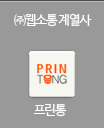The 10 Scariest Things About Commercial Boarding Up
페이지 정보
작성자 Roger 작성일25-07-14 04:50 조회3회 댓글0건본문
Commercial Boarding Up: A Comprehensive Guide
In the business world, security is critical. Whether dealing with a retail shop, office complex, or storage facility, safeguarding physical possessions is essential, specifically in times of crisis. One major preventive measure services can take is boarding up their premises. This article checks out the idea of commercial boarding up, including its benefits, techniques, and finest practices for application.
What is Commercial Boarding Up?
Commercial boarding up describes the process of momentarily securing doors and windows of commercial homes by covering them with panels or boards. This practice is frequently made use of throughout emergencies such as natural catastrophes, vandalism, or remodellings, or when a business leaves an establishment empty for a prolonged period. The supreme aim is to avoid unauthorized access, hinder theft, and protect property versus damage.
Why is Commercial Boarding Up Necessary?
The need for commercial boarding up frequently arises for a number of reasons:
Natural Disasters: Hurricanes, tornadoes, and severe storms can trigger considerable damage to structures through high winds and flying debris. Boarding up can reduce potential damage to windows and doors.
Vandalism and Theft: Unsecured facilities are vulnerable to burglaries and vandalism. Boarding up can discourage criminal activity and protect valuable inventory and devices.
Building and construction and Renovations: During repair, it may be needed to restrict access to certain areas, making sure safety and security.
Long-Term Vacancies: Unoccupied structures can end up being targets for crouching or breaking and going into. Boarding up deals protection till the property can be protected or repurposed.
Techniques of Commercial Boarding Up
There are numerous techniques to board up a commercial property successfully. These can differ based on the size and structure of the building, the level of security required, and the duration for which the boards should remain in location.
Common Boarding Materials
| Material | Functions | Finest Used For |
|---|---|---|
| Plywood | Strong and readily available | Short-term boarding, high risk |
| OSB (Oriented Strand Board) | Cost-effective, decent strength | Short to medium-term boarding |
| Metal Sheets | Incredibly long lasting, fireproof | High-security needs, long-term |
| Lexan or Polycarbonate | Light-weight, impact-resistant | High-security glass replacement |
Setup Techniques
Screw and Anchor: Secure the boards to the window or door frames using screws that permeate deeply into the wall for stability.
Brackets: Use brackets to enhance the boards, particularly for bigger openings.
Secure with Bolts: In high-risk areas, bolts can be used for added security, ensuring that boards can not be quickly gotten rid of.
Frame Construction: For extended direct exposure, building a frame to hold the boards instead of connecting straight to the structure can be helpful.
Temporary vs. Permanent Boarding Up
While most boarding up practices are planned to be temporary, there are cases where long-term or semi-permanent solutions might be essential. It is necessary to assess the individual requirements of the property and function of the boarding up.
Finest Practices for Boarding Up
To ensure the effectiveness of commercial boarding up, certain best practices need to be followed:
Assess vulnerabilities: Identify all points of entry and examine the weak points that might be exploited throughout a crisis.
Utilize the ideal materials: Choose the proper boarding materials based on the level of risk and period of boarding up.
Professional installation: For bigger or heavily impacted homes, engaging professional services can ensure remarkable security and compliance with local policies.
Preserve secure access points: Even while boarding up, ensure that you have secure gain access to points for emergency services, if necessary.
Routine evaluations: Periodically inspect the boarding to ensure it stays secure and intact, especially after storms or high winds.
Frequently Asked Questions About Commercial Boarding Up
What is the perfect density for plywood boarding?
A density of at least 1/2 inch is advised for plywood boarding up to guarantee it can stand up to high winds and effect.
How can I eliminate boards after installation?
Usually, unscrewing the boards or getting rid of bolts ought to enable simple elimination. Nevertheless, it is vital to have the proper tools on hand.
Can I board up my business myself?
Yes, lots of services choose to board up themselves; however, it is typically recommended to employ professionals for bigger properties or in high-risk scenarios.
For how long can boards keep up?
The time boards can stay in location depends upon different elements, consisting of local regulations, the security required, and physical conditions affecting the property.

How do I protect my business from prospective vandalism when it is closed?
In addition to boarding up, consider setting up security video cameras, lighting, and alarm to boost the general security of your property when closed.
Commercial Boarding Up (just click the next site) is a strategic method to securing companies from various potential threats, including natural disasters and criminal activity. By understanding numerous methods, products, and finest practices, company owner can boost the security of their properties, reduce damage, and make sure the security of their properties. While the process might seem simple, proactively participating in comprehensive planning and assessment may yield the very best outcomes in protecting a business's most vital financial investments.
댓글목록
등록된 댓글이 없습니다.




















